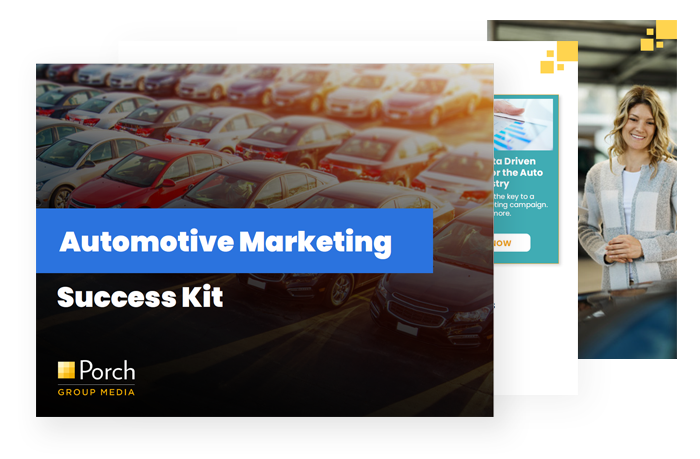There are thousands of automotive brands nationwide vying for the same customers in a saturated marketplace. However, today’s car shoppers are in control. With the availability of more channels on which to research, they are willing to commit the effort required to make informed purchasing decisions. However, not all sources are created equal. C+R conducted research, asking consumers about 24 different sources they use when making a purchase decision.

Despite so many channels of influence, the winner is clearly digital. According to C+R’s research, most shoppers are influenced by at least three online sources and two-thirds of consumers refer to an online source as their main channel of influence. The top online sources for auto consumers are:
- Independent Research Sites (50%)
- Search engines (49%)
- Manufacturer Websites (46%)
- Automotive Dealership Websites (42%)
However, once a consumer arrives at the dealership, Google cites that at least 72% of dealer visits do not result in an immediate car purchase, with many consumers shopping across multiple dealers. In addition:
- 78% of customers who visit your showroom buy a vehicle somewhere else
- 72% of customers tell their salesperson they are “just looking” at the initial greeting
Porch Group Media conducted independent research to shed additional insight into how consumers shop for vehicles. According to our study, consumers visit 3.8 dealerships on average and over 40% of shoppers buy a vehicle 90-120 days from their original dealer visit. What does that mean for the dealer? There is more time to effectively target and conquest prospects from competing stores.
Mobile Influences the Path to Purchase
The number of mobile devices in use worldwide is increasing, fast. This usage, also called ‘mobile penetration,’ was at 4.43 billion in 2015, according to research firm Statista. Moreover, there are no hints that growth is slowing down – by 2019 there will be more than 5.07 billion mobile devices in use, worldwide.

Marketers have relied on the traditional marketing funnel to help them understand and manage their customers’ journeys. But the linear path from customer awareness to conversion has been changed with the rise of digital and mobile technologies. Automotive brands have more ways to reach and convert potential customers, but it’s also added an incredible amount of complexity to the customer journey.
Over half of new vehicle internet shoppers use a mobile device to do online automotive research as they shop for a car or truck, according to a report from J.D. Power and Associates. Over the past three years, the use of mobile search has risen consistently. In fact, 82% of smartphone users turn to their phone to influence a purchase decision while in a store thereby sharing their location and mobile ID.
In the case of millennials, mobile has an even greater impact in the purchase journey. Millennials use their mobile devices more than any other generation. According to research by Edmunds. com, 41% of millennials (as compared to 20% of other adults), said they use mobile for activities like reading vehicle reviews; 34% said they use it to locate vehicles for sale (versus 20% of others); and 33% said they research vehicle pricing on mobile devices versus 21% of other adults. Overall, 80% of millennials have used their mobile devices at least once during the car purchase journey, compared to only 46% of people age 35 and over.
4 Types of Mobile Targeting
The biggest challenge for automotive marketers is identifying in-market consumers and converting them into customers. In today’s competitive auto industry, marketers have implemented many different ways to understand and measure their current and potential consumer base. However, marketers need better ways to identify consumers during the “Zero Moment of Truth,” which is when a car shopper is expressing active purchase intent by visiting a lot.

As auto shoppers near the end of the purchase journey, automotive brands are increasingly turning to mobile targeting technologies in the hopes of converting “just browsing” shoppers into new customers.
There are 4 types of mobile targeting methods:
1) Mobile Audience Targeting:
Using this method of mobile targeting, automotive brands can target relevant audiences with ads based on demographics and other data points. These are consumers who are most likely to fit their ideal customer profile.
These audience targeting methods use underlying data about an individual person, or, to be specific, their device ID which can include certain demographic information and even geographic location for more effective and engaging ads. While mobile audience targeting is becoming more sophisticated, marketers are still challenged with efficiently accessing data at scale to gain a complete picture of a consumer and the likelihood he or she will engage with a particular ad.
2) Real-Time Location Targeting:
Marketers are probably most familiar with real-time location targeting such as geofencing and beaconing. In the past few years, more brands with brick-and-mortar locations are adopting these technologies.

- Geo-targeting- Geo-targeting involves detecting a user’s location and serving them communications based on that location. Those communications might be ads or other content, like an email or push notification. Geo-targeting uses IP addresses to determine where consumers are. Every internet-connected device has a unique IP. The first three digits provide a country code. The digits after that indicate specific areas within a country, down to state, city, and postal code. Content can also be matched with data about user preferences and activities to hone in on specific groups of people or to exclude groups of people you don’t intend to target. Geo-targeting allows a user to be targeted wherever their device goes.
- Geofencing – Geofencing is the practice of using global positioning (GPS) or radio frequency identification (RFID) to set up a “fence” or designated geographic boundary. When a device moves into (or out of) the space defined by the fence, triggers are sent, and the user will receive a notification such as a text or push notification. Geofencing engages consumers based on hyper-local location. An automotive dealer, for example, might set up a geo-fence aimed at targeting individuals who are leaving a rival dealership after browsing for a vehicle. Sending them an offer for zero percent financing is more likely to make them come comparison shop — or at least consider an alternative option.
- Beacons – Beacons are small physical objects (usually about two square inches) that can be placed in desired locations. Their purpose is to detect a user’s device when it moves into a target range. Similar to geofencing, a signal is triggered when you’re near one, and a server sends a push, text, in-app message, or even an email. Beacons aren’t designed to know the people connected to a device, rather they target just the device itself. They’re simply little stationary computers that are designed to react – when a shopper’s device moves near the beacon itself, it triggers a ping, and an app starts communicating – if the user has the app with notifications enabled for the beacon’s particular location. Once the user moves out of that beacon’s range, all communications stop.
3) Archived Location Data:
Following location targeting, technologies are being developed that chain together location data to look at where a device goes over a certain time period such as 30 days. By doing so, marketers can start to learn more about a person based on where they go and then use that information to target a specific audience. For example, a device that is seen at an elementary school, a park and a store that sells children’s clothing could very well be a mom with kids. With that information, a marketer could target devices with that travel pattern and be more targeted than using the device’s current location at the time of serving an ad.
The missing ingredient however to these types of targeting are that they are limited to just targeting a device or assumptive look-alikes who may not even be in market to purchase. They do not consider the actual person connected to the device.
4) Target People, Not Just Their Device:
Unlike traditional mobile marketing, which only targets the device, Porch Group Media has developed a solution called Signals, which targets the consumers when they are actively shopping for vehicles. With Porch Group Media Signals™, you know which of your customers and prospects are visiting competing dealerships and which dealerships consumers are using for service.
The solution uses mobile location device data to identify highly qualified prospects segmented by dealer brand visited, vehicle brand owned, distance calculations from neighbor dealerships, and more.
Signals delivers high sales conversions and precise insights into timing. We partnered with industry-leading organizations to track, monitor, and validate the value of Porch Group Media Signals™ leads. The National Study revealed the following results:
- Digital Leads to a VDP (Vehicle Detail Page) convert at 1.9%
- A market leading data source estimates purchase behavior of 4.6% over 120 days
- Signals shoppers convert at 4x the sales conversion rate within 120 days of their first on lot dealer visit compared to other lead automotive data
Download our Automotive Marketing Success Kit to learn more about how you can target and acquire actual in-market car shoppers during the period when they’re making a buying decision.




